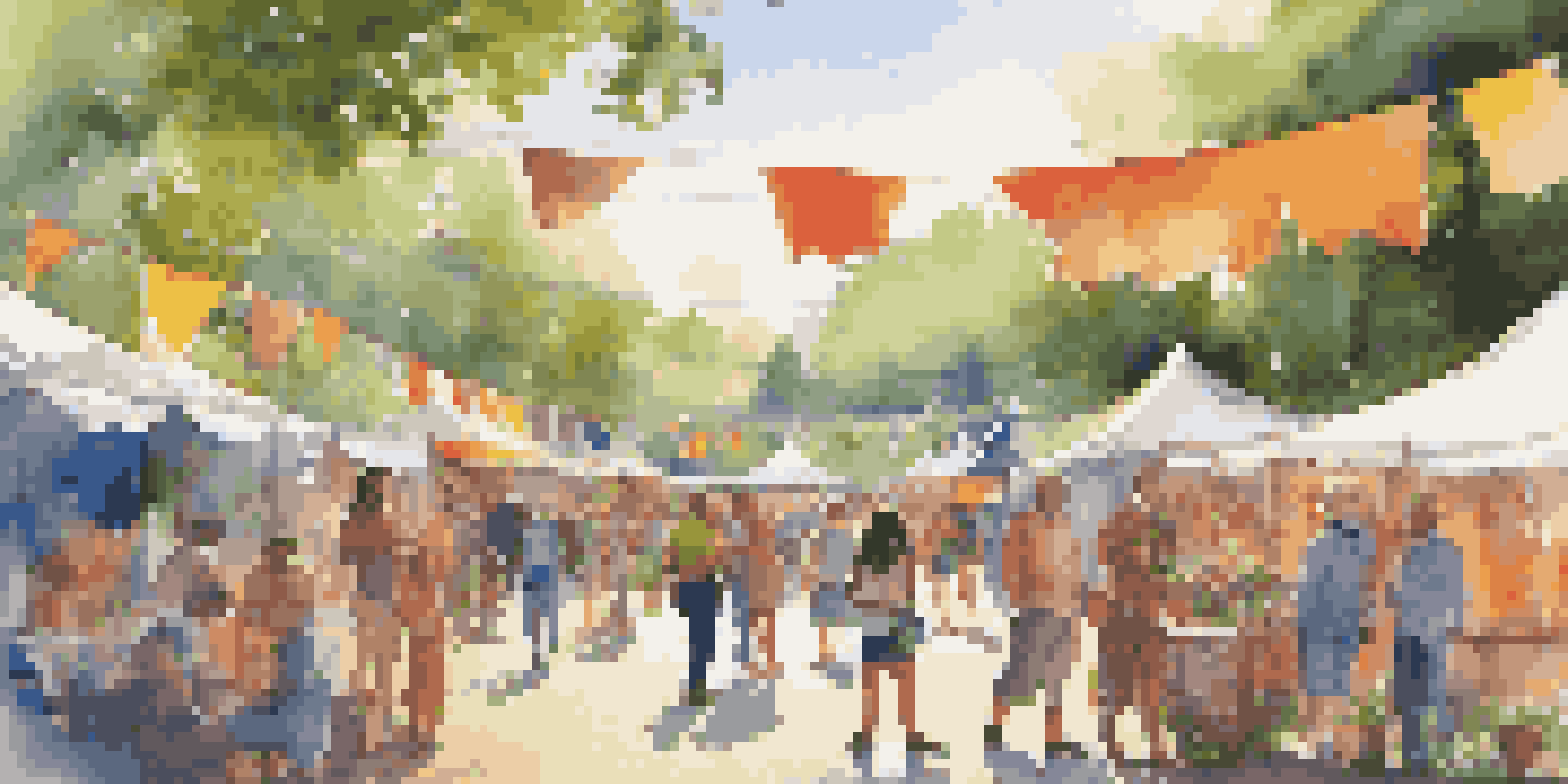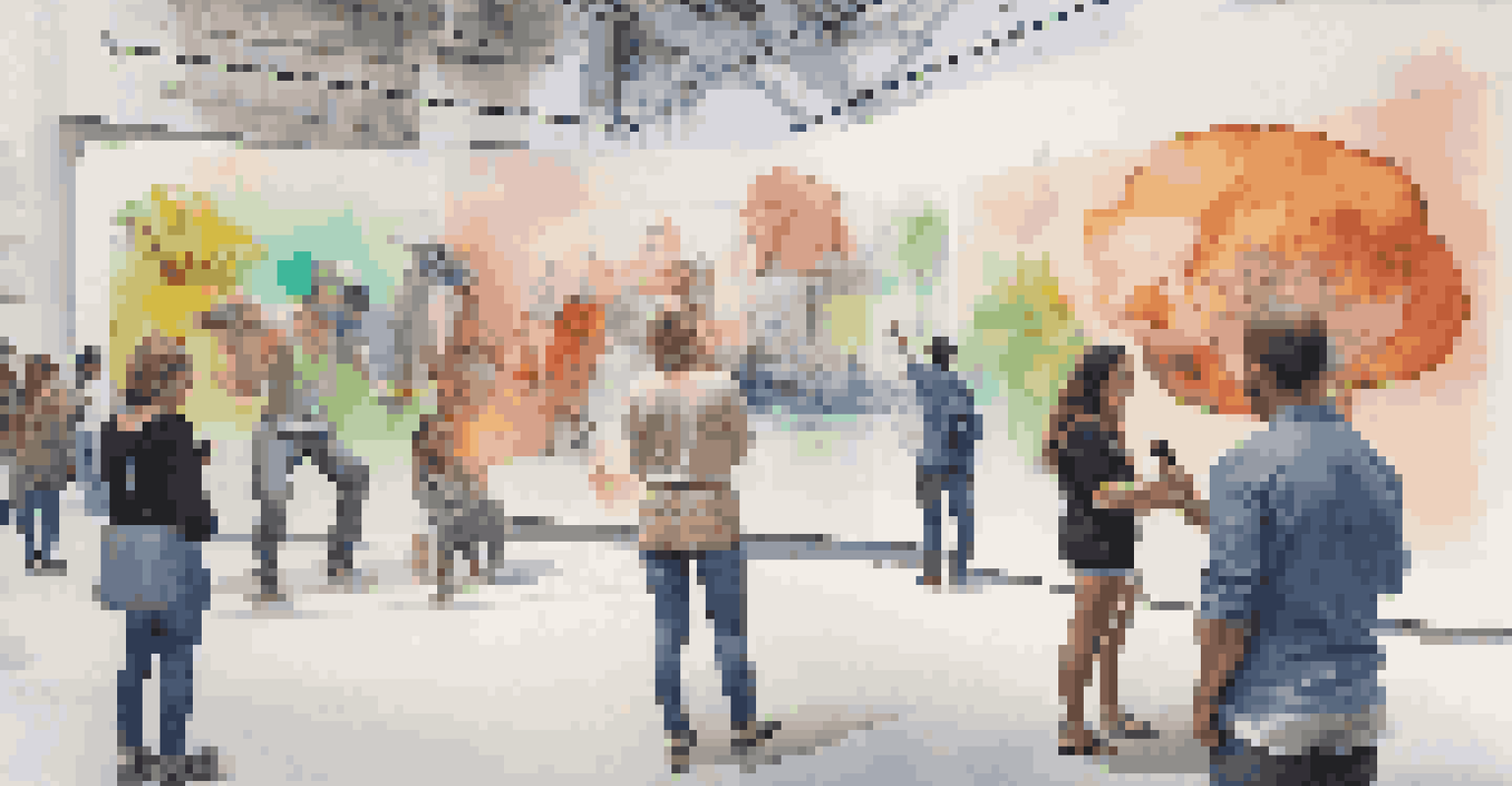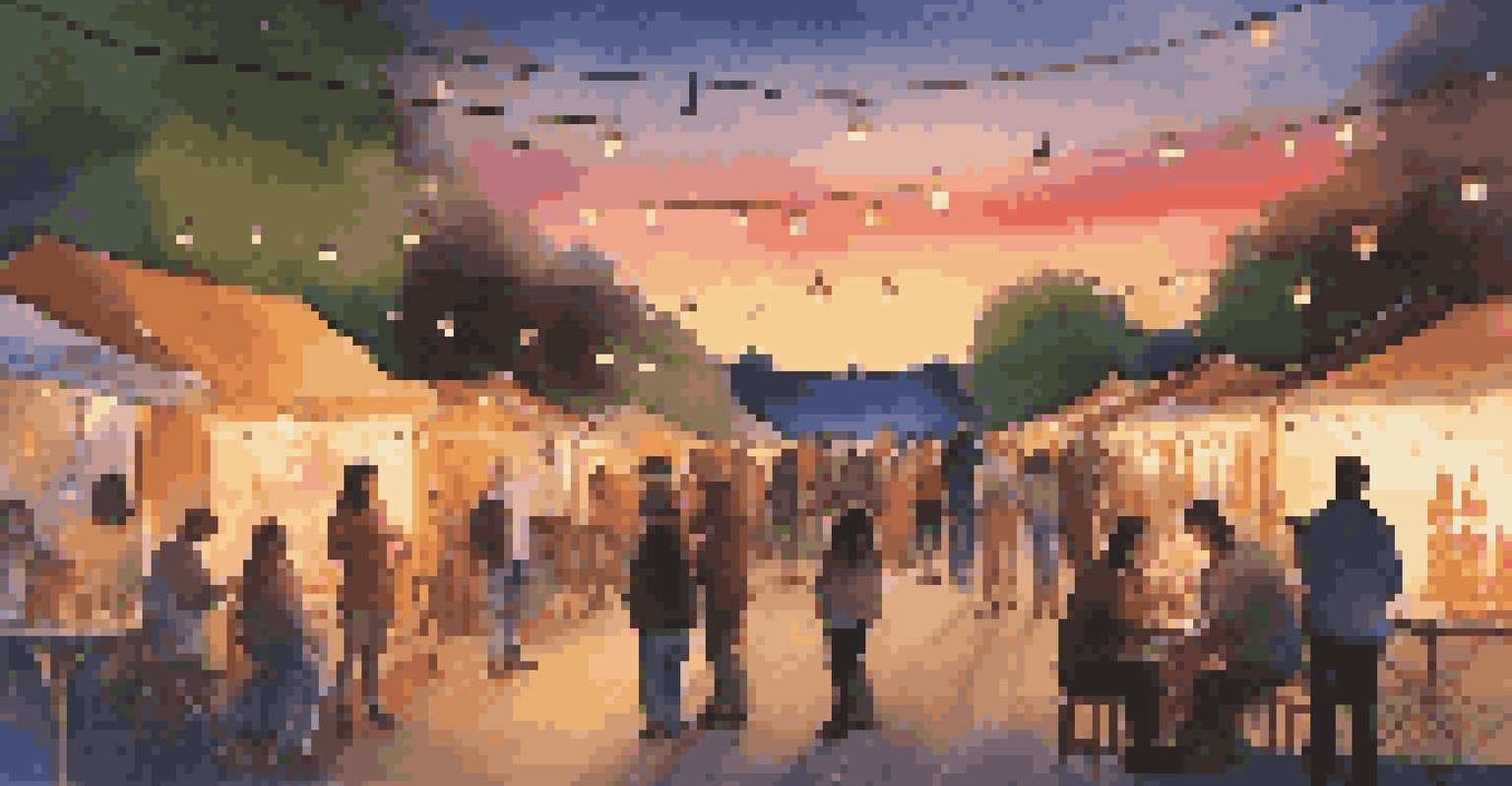The Future of Art Festivals in a Post-Pandemic World

The Resurgence of In-Person Events and Community Spirit
As we emerge from the pandemic, there's a notable resurgence in in-person art festivals. People are craving connection and the communal experience that these events provide. The excitement of gathering in vibrant spaces, surrounded by creativity, has never been more appealing. It's as if the pause made us realize how much we missed the energy of live events, where art and community intertwine.
Art is a universal language that transcends boundaries and connects us all.
Moreover, these festivals are becoming a platform for healing and expression. Artists are tapping into the emotions and experiences of the past years, creating works that resonate deeply with audiences. This emotional connection not only enhances the festival experience but also fosters a sense of togetherness among attendees.
As communities come together to celebrate art, they are also revitalizing local economies. Art festivals can attract tourism, support local artists, and create jobs, making them vital for community recovery. This wave of support for local culture and talent is a beautiful testament to the resilience of the arts.
Hybrid Models: Blending Physical and Virtual Experiences
The pandemic accelerated the adoption of digital platforms, leading to a new trend in hybrid art festivals. These events combine physical gatherings with virtual experiences, reaching broader audiences than ever before. Imagine attending an art festival in your city while also being able to explore a virtual gallery from halfway across the world.

This hybrid model not only expands accessibility but also allows for innovative art forms. Artists can experiment with digital mediums, creating immersive experiences that engage participants in unique ways. For instance, augmented reality installations can invite viewers to interact with art in their own spaces, blurring the lines between reality and the virtual world.
In-Person Events Foster Connection
The resurgence of in-person art festivals highlights the community's desire for connection and shared experiences, enhancing both emotional and economic recovery.
Moreover, hybrid festivals provide flexibility for attendees, catering to those who may still feel hesitant about large gatherings. This approach fosters inclusivity and ensures that everyone can enjoy the beauty of art, regardless of their circumstances. In this way, the future of art festivals is not just about survival; it’s about thriving in a new, interconnected landscape.
Emphasis on Local Artists and Community Engagement
As the art world shifts, there’s a renewed focus on supporting local artists at festivals. Organizers are prioritizing homegrown talent, showcasing the rich cultural tapestry within their communities. This shift not only highlights diverse voices but also strengthens local identity and pride.
The arts are not a luxury; they are a necessity for the human spirit.
Engaging the community is a key aspect of this new approach. Festivals are incorporating workshops, talks, and interactive sessions, turning attendees into active participants. This hands-on involvement fosters a deeper appreciation for art and encourages attendees to explore their own creativity.
By putting local artists in the spotlight, festivals contribute to the sustainability of the arts. They create opportunities for artists to showcase their work, gain exposure, and connect with audiences. This collaborative atmosphere transforms art festivals into vibrant cultural hubs that celebrate and nurture local creativity.
Sustainability Practices Taking Center Stage
Sustainability has become a crucial theme in the evolution of art festivals. With the growing awareness of environmental issues, many festivals are adopting eco-friendly practices. From reducing waste to promoting sustainable materials, organizers are finding innovative ways to lessen their impact on the planet.
For instance, some festivals are encouraging artists to use recycled or upcycled materials in their work. This not only enhances creativity but also sends a powerful message about the importance of sustainability in art. Attendees, too, are becoming more conscious of their choices, opting for sustainable products and practices during the events.
Hybrid Models Expand Accessibility
Hybrid art festivals blend physical and virtual experiences, allowing a wider audience to engage with art while maintaining inclusivity and innovation.
Incorporating sustainability into art festivals reflects a larger societal shift towards environmental responsibility. As attendees engage with art in a more mindful way, they are inspired to carry those values beyond the festival. This transformation is creating a ripple effect, encouraging communities to embrace greener practices in their everyday lives.
The Role of Technology in Enhancing Art Experiences
Technology is playing an increasingly vital role in shaping the future of art festivals. From virtual reality experiences to interactive installations, tech innovations are enhancing how audiences engage with art. These advancements create immersive environments that draw attendees in, making art more accessible and enjoyable.
For example, some festivals are utilizing mobile apps to provide additional content, such as artist interviews or behind-the-scenes footage. This not only enriches the festival experience but also allows for a more personal connection with the artwork. Attendees can dive deeper into the stories behind the art, fostering a greater appreciation for the creative process.
As technology continues to evolve, so too will the ways we experience art. Festivals that embrace these changes will likely attract tech-savvy audiences who seek dynamic and engaging experiences. By merging art with technology, festivals are not just keeping pace with the times; they’re shaping the future of art appreciation.
Diversity and Inclusion as Core Festival Values
Post-pandemic, there’s a growing emphasis on diversity and inclusion within art festivals. Organizers are actively seeking to create spaces that represent a wide array of voices and perspectives. This commitment to inclusivity enriches the festival experience and fosters a sense of belonging for all attendees.
A diverse lineup of artists not only challenges traditional narratives but also encourages dialogue about important social issues. Festivals are becoming platforms for change, showcasing works that address themes such as identity, equity, and justice. This shift reflects a broader cultural movement towards inclusivity, making art festivals more relevant than ever.
Focus on Local Artists and Sustainability
Art festivals are prioritizing local talent and sustainability practices, creating vibrant cultural hubs that celebrate creativity and environmental responsibility.
Moreover, inclusive practices extend beyond the artist selection process. Festivals are also focusing on accessibility, ensuring that everyone can participate, regardless of ability or background. By prioritizing diversity and inclusion, art festivals are cultivating environments where creativity can thrive and resonate on multiple levels.
Looking Ahead: The Future of Art Festivals
As we look ahead, the future of art festivals appears vibrant and full of potential. The lessons learned during the pandemic have sparked innovative approaches that prioritize community, sustainability, and inclusivity. Artists and organizers alike are excited to explore new horizons, creating experiences that reflect the evolving landscape of the art world.
We can expect to see more collaboration between artists and communities, resulting in festivals that resonate on a personal level. The blending of physical and virtual experiences will continue to expand, allowing for greater accessibility and engagement. This dynamic evolution will keep art festivals fresh and relevant, drawing in new generations of art lovers.

Ultimately, the future of art festivals is about embracing change while honoring the past. By fostering connections, celebrating diversity, and promoting sustainability, these events will continue to enrich our lives and inspire creativity for years to come. The journey is just beginning, and the possibilities are endless.